The Pika Art AI Generator from Pika Labs is one of the many AI tools that you can use to generate AI videos, but there's a twist. This is a next-gen type of text-to-video generator because it creates very realistic scenes that can be used by creators, marketers, and storytellers alike. The videos created here are usually 3 to 10 seconds long, but they look pretty impressive, with advanced diffusion and physics-based animations.
In today's article, we'll show you how to generate a video from text using Pika AI, point out some shortcomings of using this method, and then give you a stellar tool that can improve the generated video. Let's dig in!
In this article:
Part 1: How to Generate Videos with Pika AI
Let's start with a simple guide to using the Pika AI model to generate a video from a text prompt. Follow the steps below.
- Go to pika.art, type your prompt, and click on the Generate Icon.
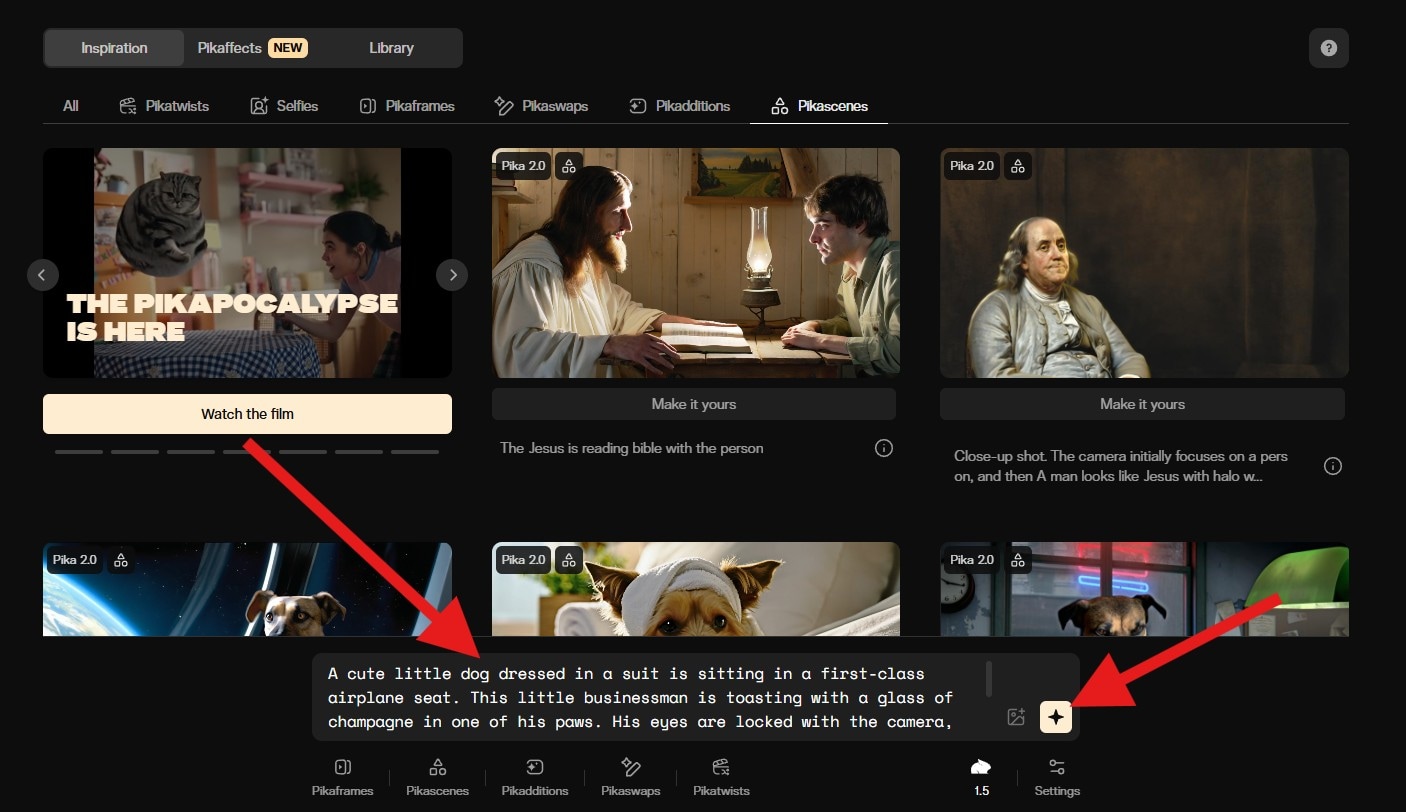
- We used a simple prompt. Check it out.
A cute little dog dressed in a suit is sitting in a first-class airplane seat. This little businessman is toasting with a glass of champagne in one of his paws. His eyes are locked with the camera, and he is very excited. You can notice that he is in a luxury plane, and in front of him, you can see a well-cooked, expensive-looking meal.
- Since this tool is in very high demand almost always, you will need to wait for a very long time for your video to be generated.

- Eventually, you will get a cool, short video that looks something like this.

Part 2: Common Issues with Videos Generated by Pika AI
AI-generated videos are improving, but there are still a few issues. Somehow, you can clearly notice when a video that aims to be realistic was actually generated using AI. After reviewing several videos generated using the Pika AI model, we have identified the three most common problems.
Inconsistent Object or Character Details: As the scene progresses, you notice that certain objects are not where they were before or that they have changed their color or shape. You will also notice that characters sometimes change appearances in the middle of the scene. This can break the video, and you might not want to post it.
Unnatural Motion or Unrealistic Animation: Natural motion is hard to imitate. Even though AI models are doing a pretty good job, there are certain nuances that they cannot imitate.
Background Distortion and Flickering: These realistic AI models usually focus on the foreground, and in certain frames, the background will get distorted, change, and you will notice some flickering.
Of course, all these issues are not insurmountable, especially when you have a video editing tool that is packed with helpful features. Let's see if there is a way to improve videos generated using Pika AI.
Part 3: Transforming Pika AI Videos into a Compelling Story
One of the best video editing tools available is Filmora. The first thing that sets Filmora apart from its competition is the sheer number of creative assets, templates, and helpful features that make video editing a complete joy, and many of them are AI-powered. The second is the fact that it is simply easier to use than other tools. Every feature is easy to access, understand, and tweak to your specific preferences.
You can download Filmora and try it out for yourself. For now, we will focus on features directly related to improving videos generated with the Pika AI model.
- 100+ advanced video editing features.
- Vast video/audio effects and creative assets.
- Powerful AI for effortless content creation.
- Intuitive, professional yet beginner-friendly.
- Works on Mac, Windows, iOS, and Android.

AI Video Stabilization
If the video generated with Pika AI is shaky, you can use the AI Stabilization feature available in Filmora to ensure the video is stable. This type of tweak can significantly improve the quality of the video, and all you need to do in Filmora is to go to Video > AI Tools, and simply find and activate the Stabilization feature. You can also adjust the slider to control the level of stability you prefer in your video.

Speed Ramping
Speed ramping is used to speed up or slow down certain parts of the video. Let's assume that there is an apparent mistake in the Pika AI video. You can speed up the footage there, make the mistake less noticeable, and then slow down the scene where the AI did a good job. This is accessed by going to Speed > Speed Ramping. After that, pick a template and then adjust the speed of each frame of the video below to your liking.
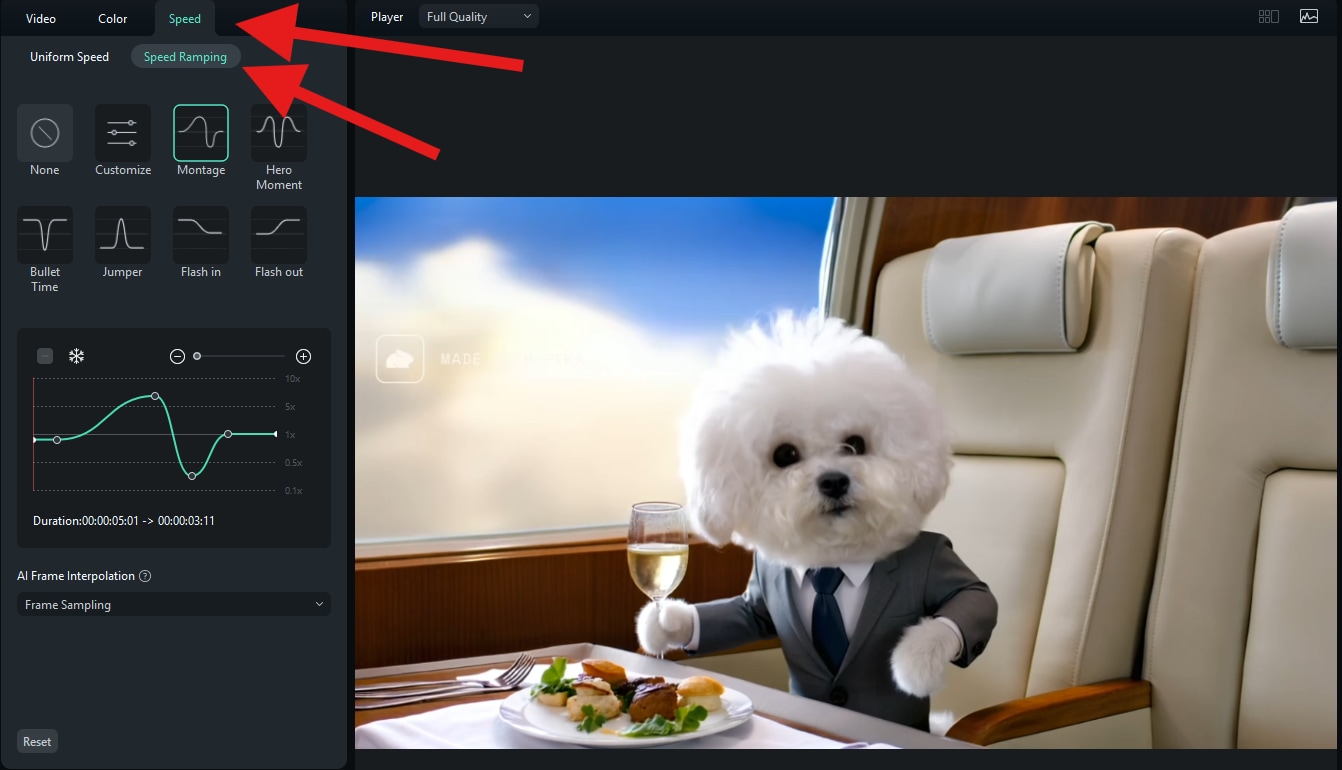
Smart BGM Generation
All AI videos generated by Pika are without sound. Filmora can solve this issue in a few simple clicks. As soon as you open Filmora, you will notice the Toolbox section on the left. From there, you will find the Smart BGM Generation feature. Activate it, upload the Pika AI video, and simply click on Start. The AI will analyze your video and add background music to it in a jiffy. You don't have to worry about a single thing.
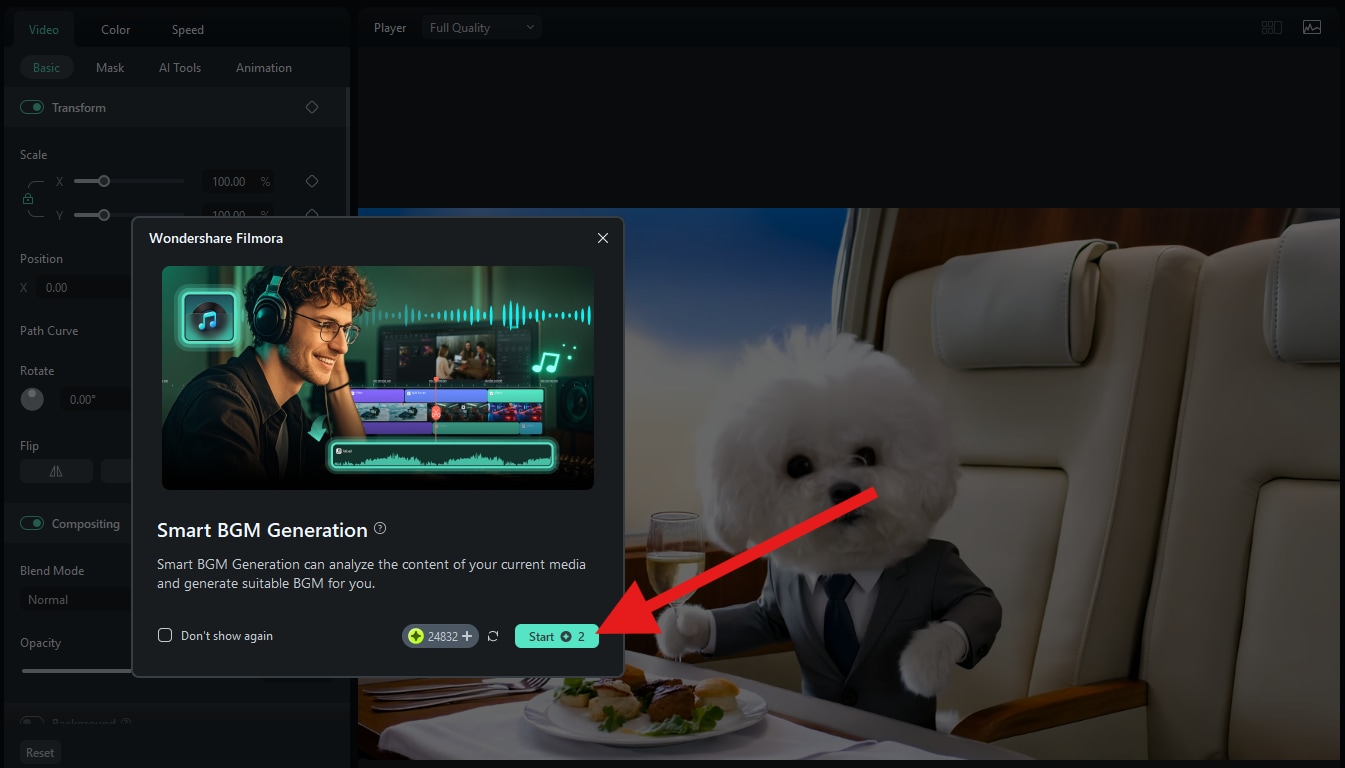
LUT Color Correction
If you prefer a certain aesthetic when it comes to colors, then you will be happy to know that Filmora features excellent options that you can find if you activate the LUT feature. You can select from a wide array of presets. These types of edits can make the entire video feel different. Colors are something that can make or break a video, and if you adjust them perfectly, you will get the best possible result.
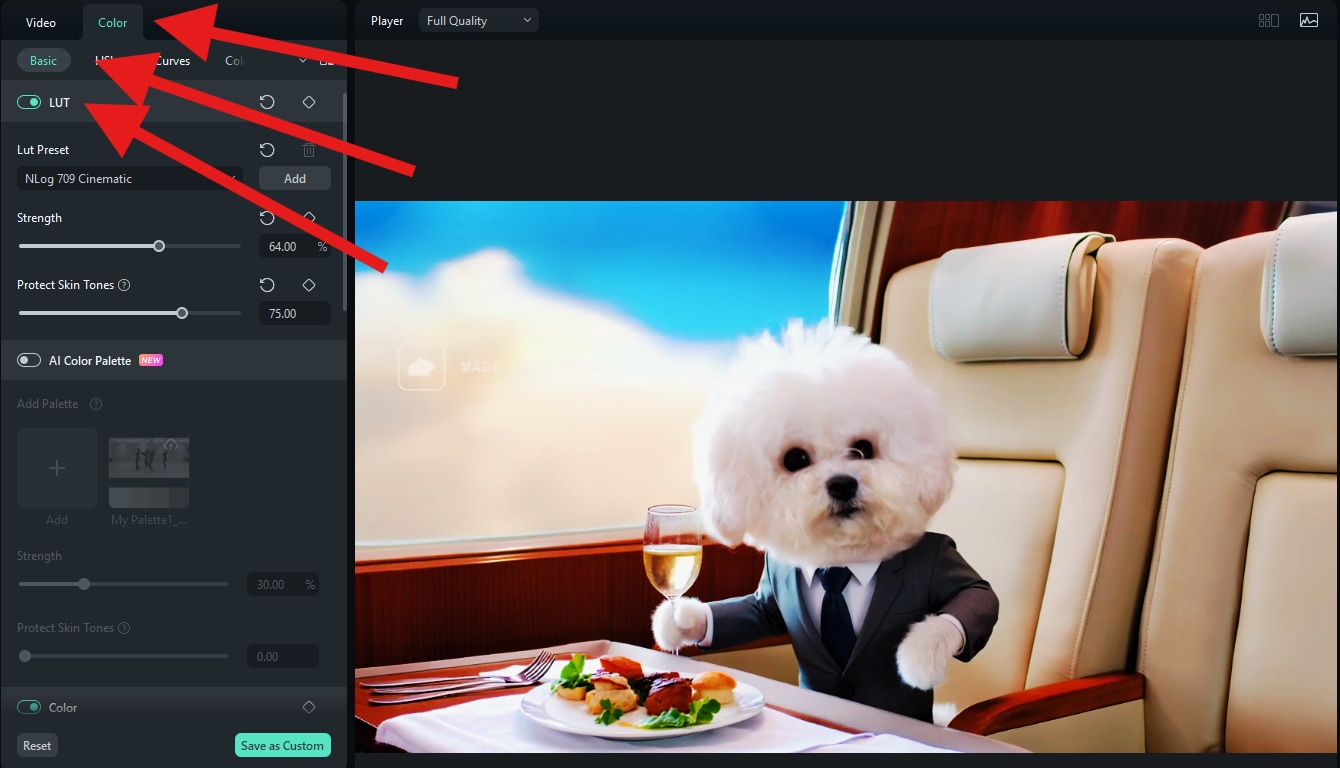
Adding Animated Titles
If you visit the Titles section, you will find all sorts of animated presets to choose from. Drag the one you like best to the timeline, and edit the text to reflect your message. Adding titles or text to a video makes sharing the exact message you want to share way easier. You can simply write it down and ensure that everyone understands the point you want to convey. Having a clear message is something people admire when watching AI videos.
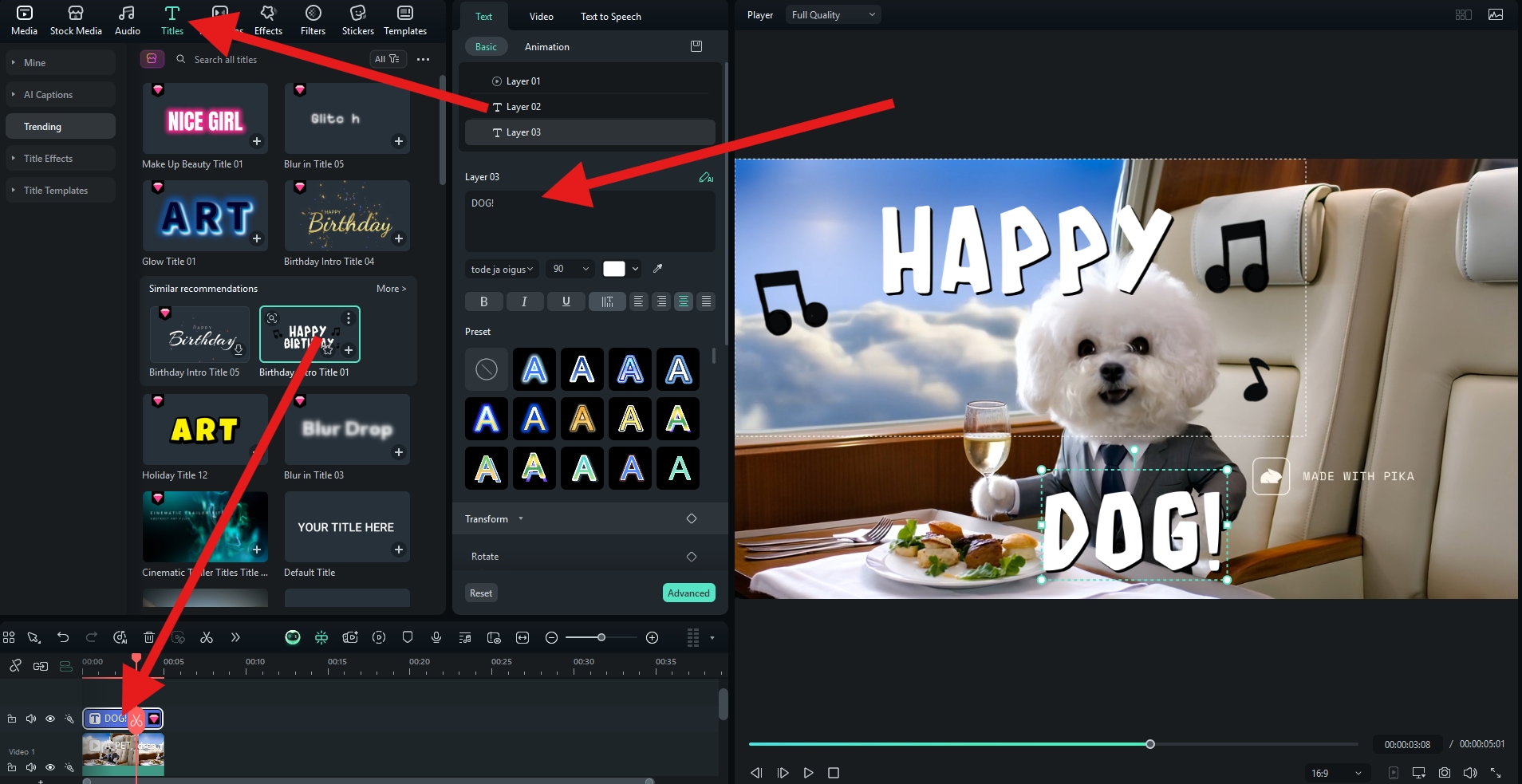
Adding Hollywood-Grade Effects
If you know which ones to pick and how to implement them, the effect presets you can find in Filmora will improve your video multiple times. If you manage to sync the effects with some music, you can divert attention to a potential mistake in the video generated by AI. To add effects, simply click on the Effects tab, pick something, and drag it to the timeline above your video. You can also adjust the effect's opacity and other sliders.

We have covered many features, but we have only scratched the surface of everything that Filmora can do. If you really want to see how fun video editing can be, you can give Filmora a try. It also has a new feature for generating videos from text prompts called AI Idea to Video, so be sure to check it out.
Part 4: Conclusion
In this article, we have discussed how to generate videos from texts using Pika AI and how to use Filmora to further edit and enhance your AI videos.
If you want a full-pack experience of generating AI videos and editing them without switching apps, you can use Filmora, as it provides stunning AI features that allow you to generate videos from scratch, or turn images into videos, and gives you numerous video enhancement and editing features.
If you prefer editing videos on the go, you can try the Filmora app, which is available for Android and iOS.



 100% Security Verified | No Subscription Required | No Malware
100% Security Verified | No Subscription Required | No Malware


